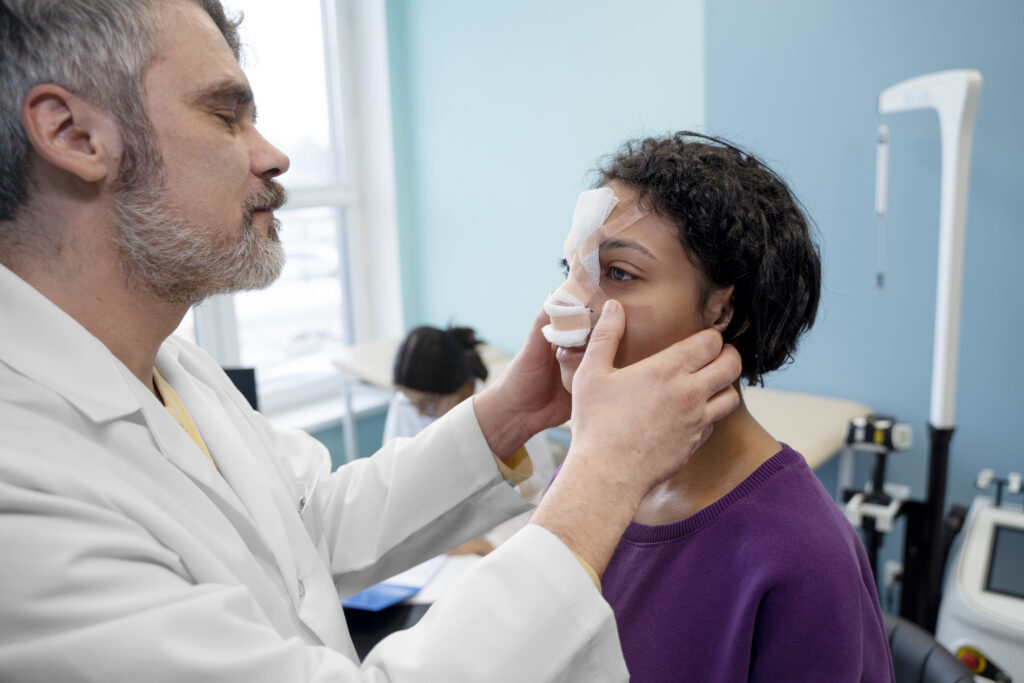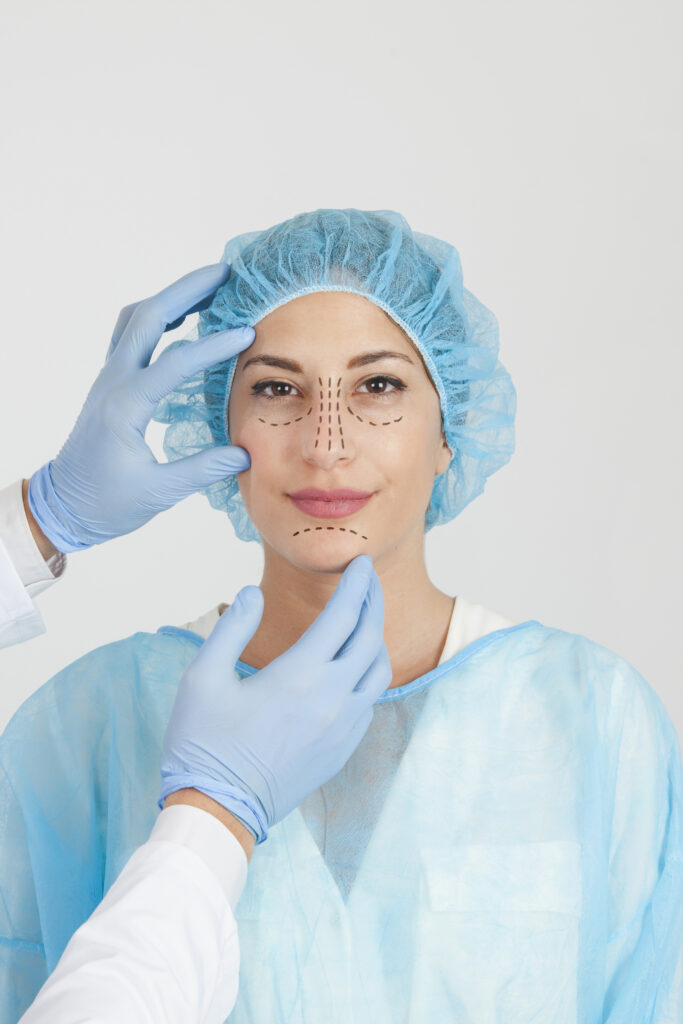Navigating the Nose: Rhinoplasty Demystified
The decision to undergo rhinoplasty, commonly known as a nose job, is a personal and transformative journey for many individuals. Beyond the cosmetic enhancements, rhinoplasty often carries emotional and functional significance, addressing both aesthetic concerns and potential breathing issues. In this comprehensive guide, we will demystify the intricacies of rhinoplasty, exploring the reasons behind this surgical choice and the transformative impact it can have on an individual’s self-esteem and overall well-being.

The Essence of Rhinoplasty:
1.1 Aesthetic Refinement:
At its core, rhinoplasty is a surgical procedure aimed at reshaping and enhancing the appearance of the nose. It is sought after by individuals who wish to address aesthetic concerns such as a prominent hump, a wide or asymmetrical nasal bridge, or disproportionate nostrils. The goal is not to erase uniqueness but to refine and harmonize the facial features.
1.2 Functional Improvement:
While the aesthetic aspect is often in the spotlight, rhinoplasty can also address functional concerns related to the nasal passages. Individuals experiencing breathing difficulties due to a deviated septum, nasal valve collapse, or other structural issues may find relief through rhinoplasty, improving both form and function.
The Decision-Making Process:
2.1 Understanding Personal Motivations:
Every individual considering rhinoplasty has a unique set of motivations. Some may have lived with self-consciousness about their nose for years, while others may have experienced trauma or injury. Understanding these personal motivations is a crucial step in the decision-making process.
2.2 Setting Realistic Expectations:
During consultations, it is essential to establish realistic expectations. Rhinoplasty is a transformative procedure, but it is not a guarantee of perfection. Open communication between the patient and the surgeon is paramount in ensuring that both parties share a clear vision of the desired outcome.
The Surgical Process:
The journey begins with a comprehensive consultation. Experienced surgeons take the time to understand the patient’s goals, assess the nasal structure, and discuss the possible surgical approaches. This collaborative planning stage lays the foundation for a successful and satisfying rhinoplasty.
3.2 Surgical Techniques:
Rhinoplasty involves various surgical techniques, including:
- Open Rhinoplasty: Involves an external incision across the columella (the strip of skin between the nostrils) for better access to the nasal structure.
- Closed Rhinoplasty: Utilizes internal incisions, resulting in no external scarring. It is suitable for less complex procedures.
The chosen technique depends on the specific goals of the surgery and the patient’s unique anatomy.

3.3 Recovery and Healing:
Post-surgery, the initial recovery period is crucial. Patients can expect swelling and bruising, but these subside gradually. The use of cold compresses, prescribed medications, and following postoperative care instructions aid in a smooth recovery.
Addressing Common Concerns:
4.1 Managing Swelling and Bruising:
Swelling and bruising are common after rhinoplasty, but these are temporary. Surgeons often recommend specific measures, such as keeping the head elevated, using cold compresses, and avoiding strenuous activities, to manage these postoperative effects.
4.2 Navigating the Emotional Rollercoaster:
The emotional aspect of rhinoplasty recovery is often underestimated. Patients may experience a range of emotions, from excitement to anxiety. It’s crucial to acknowledge and communicate these feelings, seeking support from both the surgical team and loved ones.
The Emotional Impact of Rhinoplasty:
5.1 Boosting Self-Esteem:
One of the most significant psychological impacts of rhinoplasty is the boost in self-esteem. Individuals who have felt self-conscious about their noses for years often experience a newfound confidence, allowing them to move through life with a positive self-image.
5.2 Psychological Well-Being:
Research suggests that rhinoplasty can positively influence psychological well-being. Addressing perceived nasal imperfections can lead to a reduction in social anxiety and an improved overall quality of life.
Common Myths and Realities:
6.1 Myth: Rhinoplasty Results Look Unnatural:
Reality: When performed by a skilled and experienced surgeon, rhinoplasty results can appear entirely natural. The goal is to enhance the individual’s features, not create an artificial appearance.

6.2 Myth: Rhinoplasty is Only for Cosmetic Purposes:
Reality: While many seek rhinoplasty for cosmetic reasons, the procedure often includes functional improvements. Breathing difficulties due to structural issues can be effectively addressed during rhinoplasty.
The Long-Term Journey:
7.1 Patience is Key:
Patients should approach the rhinoplasty journey with patience. Final results may take months to fully manifest as residual swelling subsides. It’s essential to trust the healing process and maintain open communication with the surgical team.
7.2 Embracing the Transformation:
Rhinoplasty is not just about changing the physical appearance; it’s about embracing a transformed self. Patients often report a renewed sense of self-confidence and a positive shift in their overall well-being.
Conclusion: Navigating the Path to Self-Discovery
Rhinoplasty is a nuanced journey, intertwining aesthetic refinement with functional improvements. Beyond the surgical suite, it is a path of self-discovery, empowerment, and renewed confidence. As individuals navigate the decision-making process, it’s crucial to prioritize open communication, realistic expectations, and a collaborative approach with the surgical team. In demystifying rhinoplasty, we uncover a transformative experience that extends beyond the nose, influencing the way individuals perceive themselves and navigate the world around them.
